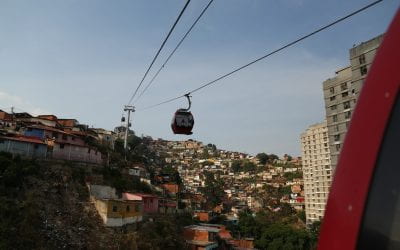Editor’s Letter
Panamá
Crossroads
Five hundred years ago this fall Spanish explorer Vasco Núñez de Balboa became the first European to see the Pacific Ocean. Climbing alone to the high peak of a mountain, he saw a glimmer of what was then called “the South Sea.” Four days later, he and his men reached the ocean and claimed all of what was to become the nation of Panamá for Spain. As Arys- teides Turpana notes in his article, the Guna leader Bab Giakwa guided the Spaniards there, hoping that they would follow their illusions of coffers of gold and stop the displacement of native people.
That September 25, 1513, sighting marked the opening of a crossroads between the
Pacific and the European worlds, between the indigenous culture and the Spaniards. It led
to the hopes and illusions and fears and tragedies for generations—from the Spanish conquest to the building of the Panama Canal, connecting the Pacific to the Atlantic for the first time
in history.
I also think of the encounter with the Pacific as setting the stage for other crossroads: the ethnic and cultural diversity of bustling port cities, the diversity of northern and southern spe- cies, and the sometimes difficult junction of modernization and underdevelopment, democ- ratization and authoritarianism. The geographical configuration of the country made it ideal for a canal to join the two oceans, although neighboring Nicaragua was also a stiff contender for the passageway. The French came first, undertaking a huge feat of engineering in 1881,
but were ultimately defeated by rains, jungle and tropical disease. Then came the Americans, taking over the territory of the Panama Canal Zone and eventually conquering the jungle, torrential rains and tropical disease to successfully build the canal. The United States finally returned the Canal Zone to the Panamanian nation on December 31, 1999.
Living next to such a powerful ocean, forging history in a place where geography is destiny, creates a particular resilience. Once a part of Colombia, once virtually a colony of the United States, Panamá with the powerful Pacific on one side and the sprawling Atlantic on the other has come into its own. As Roberto Eisenmann observes, Panamá is possibly the only country in the world that celebrates three independence days.
As a little girl, I’d listen over and over again to the story of “The Little Engine That Could.” That’s the way I envision Panamá— as “the little country that could.” And it’s the reason that we decided to honor the Spanish spelling of the country in this issue. It’s a little salute to a small but determined country. Panamá has conquered disease and geographical challenges; it has built and developed and modernized. The canal is being expanded; the historical center of Panama City is drawing a thriving tourist business; new museums and a lively art scene stimulate Panamanian identity and culture. The country’s economic growth rate in 2012 was estimated at 10.6%. Yet, as many of this issue’s authors point out, the country still faces many challenges—including inequality and repression.
This magazine is the product of the collaboration of many courageous, resilient and creative people—for the most part Panamanians. A special thanks to all of them, and, in particular, to Fernando Berguido, editor and friend, without whom this issue would not have been possible.
Winter 2015, Volume XIV, Number 2
Related Articles
Editor’s Letter – Animals
Editor's LetterANIMALS! From the rainforests of Brazil to the crowded streets of Mexico City, animals are integral to life in Latin America and the Caribbean. During the height of the Covid-19 pandemic lockdowns, people throughout the region turned to pets for...
Editor’s Letter – Museums
Editor's LetterMuseums. They are the destination of school field trips, a place to explore your own culture and a great place to run around and explore. They are exciting or boring, a collection of objects or a powerful glimpse into other worlds. Until recently—with...
Editor’s Letter: Transportation
Bridges. Highways. Tunnels. Buses. Trains. Subways. Transmilenio. Transcable. When I first started working on this issue of ReVista on Transportation (Volume XXI, No. I), I imagined transportation as infrastructure.


